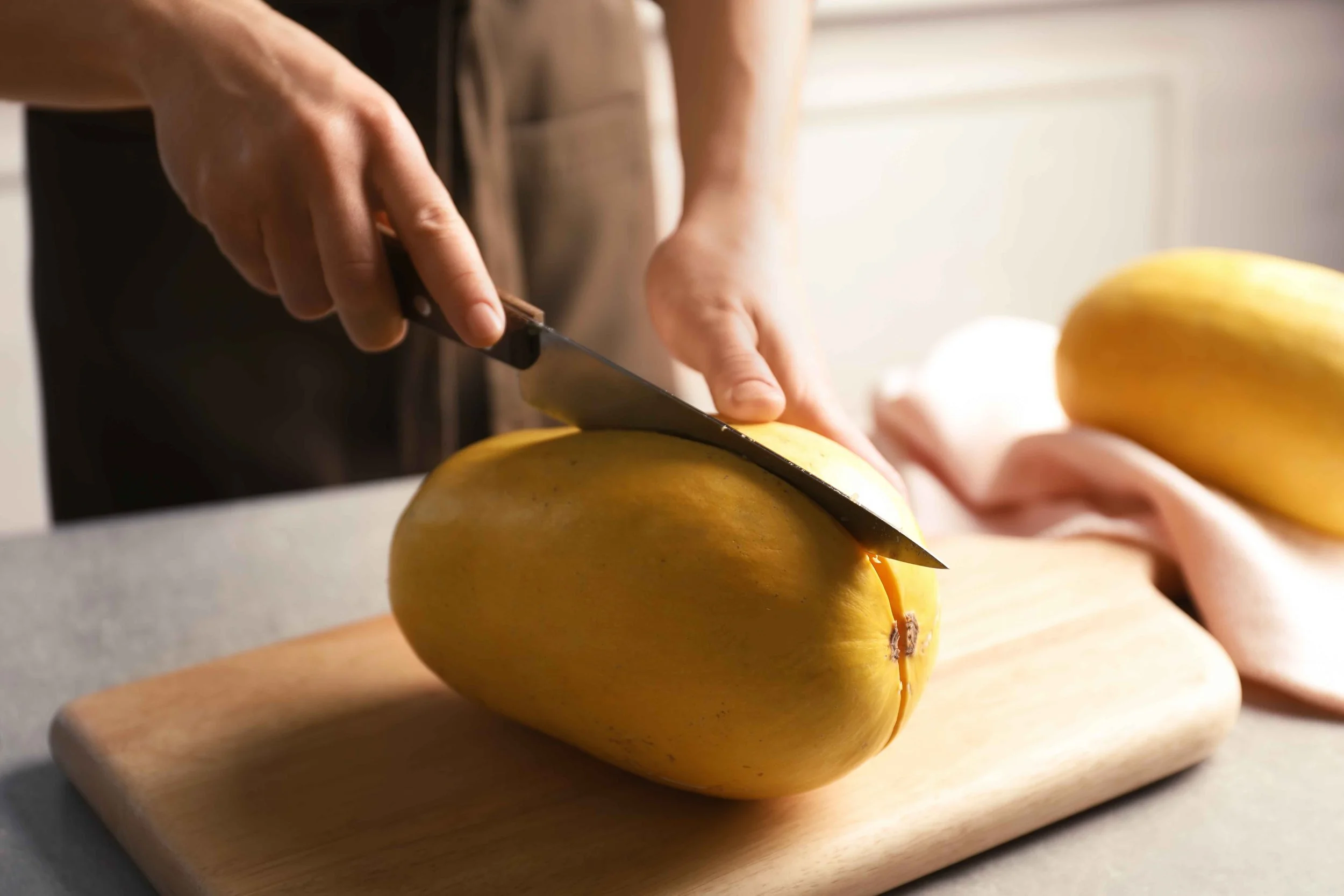How to Cook Spaghetti Squash - Easy, Low Carb Recipes for Fall
If you are over 50, a low carb diet could be a beneficial eating style for its numerous health benefits . A low-carb diet is high in protein, fat, and certain vegetables. There is some evidence that this lifestyle choice can have positive effects with weight loss or weight maintenance.
A low carb diet doesn’t have to be complicated! There are lots of ways to easily and deliciously replace some of the less healthy foods in your life, such as pasta and bread, with low-carb alternatives. This reduces the number of carbohydrates you eat naturally while allowing you to enjoy your food.
One popular vegetable that pops up in low-carb diets is spaghetti squash. The use of the word "spaghetti" in the name of this healthy, low-calorie vegetable is no accident because it makes a great substitute for pasta. Here are some things you should know about spaghetti squash.
What Is a Spaghetti Squash?
Spaghetti squash is a winter vegetable similar to pumpkin or zucchini. When you cook it, the vegetable's flesh separates into long strands resembling spaghetti. It has a mild, somewhat neutral taste, absorbing the flavor of the food around it, such as sauce.
The Health Benefits of Spaghetti Squash
What makes spaghetti squash stand out as a low-carb alternative is its nutrients. Dietitians call it a nutrient-dense food, meaning it has low calories but lots of essential vitamins and minerals. It contains:
Pantothenic acid
Fiber
Vitamin C
Manganese
Vitamin B6
Niacin
Iron
The high fiber content in spaghetti squash contributes to good bowel function and colon health. The bright yellow color also means it contains beta-carotene, which is a powerful antioxidant.
Now, add on the fact that there are only about 10 grams of carbohydrates,. Spaghetti squash fits nicely in a low-carb diet for those 50+ looking to manage their weight and carbohydrate intake.
What to Do With Spaghetti Squash
Your spaghetti squash journey begins at the grocery store, farmers market, or in the garden. Choose your squash wisely to get the best taste and most nutritional benefits.
How to Pick Spaghetti Squash
When selecting your spaghetti squash, look for a golden or dark yellow color. When you pick it up, it should feel heavy, too. Now, run your hands around the body of the squash. It should be firm and free from soft spots.
Also, look for squash that still has a stem. The stem should be firm and dry. The stem should also have a nice, round shape.
What to Avoid
Leave behind any spaghetti squash with soft or wet skin areas. There should be no cracks, and the stem should be intact. If it is missing the stem, walk away.
How to Cut Spaghetti Squash
Spaghetti squash has a tough exterior, making it a challenge to cut. Here are a few tricks that make it easier:
Cut a few slits in the squash in a line from end to end.
Place the squash in the microwave for five to six minutes. When you take it out, it will be hot, so use a towel or potholders.
Cut the squash in half along your line.
You can use the oven if you would prefer not use the microwave. You do need to heat it, though, in some way.
Set your oven to preheat at 400 degrees Fahrenheit and put the whole squash in for about 10 minutes. Once you hear the oven beep that it is ready, you can carefully remove the squash. Remember, it will be hot, so protect your hands and arms.
How to Roast Spaghetti Squash
Roasting is the best way to cook spaghetti squash. Remove the seeds and scrape away the inside strands with a spoon once you cut the squash open.
With the squash cleaned, sprinkle one or both of the halves with salt and let them sit for at least 10 minutes. This draws out the moisture and prevents the vegetable from being squishy. In the meantime, preheat your oven to 400 degrees if necessary.
After 10 minutes, pour off any excess liquid and pat the squash dry. Drizzle olive oil over it and season it with salt and pepper.
Place the squash face down on a baking sheet. Bake it in the oven for 40 minutes, then check on it.
Drag a fork along the cut side. If ready, the spaghetti-like strands will release easily. If not, put it back in the oven and recheck it in 5 or 10 minutes. Let the squash cool for a few minutes before harvesting your spaghetti with a fork.
What to Pair Spaghetti Squash With
Now, what should you serve your roasted spaghetti squash with? Here are some of our favorite recipes:
Paleo Meat Sauce
This hearty dish is a perfect alternative to traditional bolognese pasta! You won’t even miss the pasta because this low carb spaghetti squash is so filling and satiating.
Arugula Pesto
Try this Mediterranean twist on spaghetti squash! It’s refreshing, full of powerful health benefits from the herbs and greens, and delicious! You can add chopped cherry tomatoes, pine nuts, red onion, peppers, and crumbled feta as toppings for a filling and nutritious Mediterranean dish!
Shrimp Scampi
Nothing pairs better with pasta than delicious, garlicky shrimp scampi! This healthy dish is perfect for an easy lunch or a lighter dinner.
There are endless topping combinations for this low carb pasta alternative! Once you master the art of spaghetti squash, you'll never go back to gluten-heavy, high-carb pasta.
More Recipes from Mighty Health
Mighty Health is your source for nutrition, exercise, and lifestyle tips for those 50+! Find more nutrition guidance and healthy recipes on our website, or sign up and talk to your own personal lifestyle coach to meet all your health goals! Explore what Mighty can do for you here!






